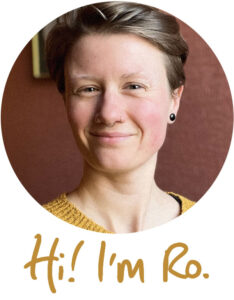What Is a Polyamorous Relationship?

Polyamory is the sometimes challenging, often liberating, and almost always unpredictable practice of having multiple simultaneous intimate, sexual relationships with different people. It’s becoming more popular. New dating apps cater specifically to non-monogamists, and more mainstream apps are beginning to include features for those seeking a polyamorous relationship. There are meetups and munches, conferences and communities.
Types of Polyamorous Relationships
On a practical level, different people do polyamory in different ways. Many of them have their own subcategories. Solo poly folks enjoy relationships without any expectation of merging their lives in many of the ‘traditional’ ways such as living together or combining finances. Kitchen table polyamory denotes constellations where everyone involved – partners, lovers, metamours – is able to sit down at the same table and enjoy each others’ company. Relationship Anarchists prefer to eschew all unnecessary hierarchy among their partners, whereas others will name a primary partner who always has priority among other lovers, or describe themselves as “monogamish”.
The common factor among all of these ways of approaching relationships is the belief that romantic love, sexuality, and partnership don’t have to be confined to only one other. And why should they? We don’t treat any other form of love this way – we love friends, family members, and pets without any fear that loving more than one will cheapen the love we have for others. We understand in this context that love is not a finite resource.
A (Brief) History of Polyamory
According to Sex at Dawn: The Prehistoric Origins of Modern Sexuality by Christopher Ryan (well worth a read), the ‘traditional’ approach of only having one partner at a time only came into being around 10,000 years ago – quite recently, in relative terms. Before this we were nomadic hunter-gatherers, living in tribes, enjoying promiscuous sex and not worrying about which children belonged to whom. Sexual intimacy was enjoyed playfully and openly, as a shared resource, strengthening bonds within the group.
The advent of agriculture brought a huge cultural shift, and with it came an incentive to know who our children were so that we could be sure they inherited the land and wealth we had begun to accumulate. And so we began to marry.
The “default settings” we’ve mostly been living ever since – the narrative of dating, then agreeing some form of exclusivity, moving in, and finally marrying – is a reassuring script to be able to fall back on. Engaging in polyamorous relationships forces me to eschew this progression and really feel into what I want, both in my life generally and with each new person I meet. Do I want hierarchy, or as little of it as possible? How much energy do I want and need to spend with the people closest to me? How much intimacy do I want with each person? This process is both liberating and occasionally exhausting.
What Does it Mean to be Polyamorous?
There are clearly other things that define polyamory, besides simply the practice of having multiple relationships at once. For me it signifies a throwing out of this script: I no longer have to go along with the main narrative I’ve been exposed to my whole life about what relationships “should” look like. I can take each relationship on its own terms and define it however I like, and I get to create something new with every new person.
Perhaps this means only seeing them once a month or so with limited contact in-between, or perhaps they become a close friend who I catch up with often and can rely on. Maybe they’re in another country and we enjoy intimacy when we’re occasionally sharing physical space, or maybe we move in the same social circles and share many mutual friends and lovers.
How Polyamory Works
A polyamorous relationship is therefore built on an awful lot of honest communication, and a willingness for everyone involved to process their own desires and fears. I need to be truthful not only with myself about what I really want in my relationships, but I must be able to communicate this to those I’m in relationship with, too – even if they are casual lovers, even if what I need to say might end the relationship.
Fear, too, needs to be recognised and welcomed. So many of us grew up learning that we must jealously guard our partner, that any attraction to third parties threatens – and may necessarily end – our relationship. We learn to find safety and security in monogamy, but this is false.
Monogamous relationships can still end for all sorts of reasons, and remaining exclusive to each other doesn’t really protect against any of the things we fear. The only difference with polyamory is that we make these fears explicit.
As Willow Smith said recently:
“That insecurity and fear is something that we need to overcome and something that we need to evolve out of and transmute that into something new and different that can actually be helpful and make us love more and more freely… Monogamy, I feel, actually inhibits you from learning those skills of evolving past those feelings of insecurity and jealousy.”
Willow Smith
Why Polyamory?
Polyamorous relationships, when done successfully, force us to confront the things we’re scared of in a much more immediate way than monogamous commitments. Perhaps I feel anxious if I know that my partner is on a date with another person, scared that I will be abandoned – even if there is no evidence to support this. Bringing this up when we’re next together, naming it and acknowdging it as part of my experience can help to remove its power. Perhaps there’s something my partner is willing to do to help, even if it’s as simple as offering reassurance.
Relating in this way also encourages me to become more self-reliant, which seems a little counter-intuitive in the context of having multiple intimate partners.
One of the first arguments many people make in favour of polyamory is how great it is not to have to rely on one person for all of their needs (and likewise not have them rely on us for everything either). The tricky side of this is that my partners are not always available to me in a way which I enjoyed in monogamous relationships. If a partner is spending a weekend with another lover, then they are unavailable to me for a couple of days. I have to know that I have a solid network of friends (platonic, romantic, or otherwise) in case I need company or emotional support. And in the worst-case scenario that no-one is around, I know will be ok on my own for a little while.
As someone who has a history of losing myself in another at the expense of investing time in friendships, this has been a helpful lesson to learn. It’s nudged me forcibly in the direction of finding and building my own communities.
Relating openly, practicing polyamory, means being able to own all of our jealousy, fear, and anxiety and discuss it with those we love, trusting that it won’t necessarily end our relationship. It means being able to grow through these challenges and learn how to really understand what we want and how to care for ourselves. And finally, of course, it means being able also to express the love and affection we have for all of the people we’re close to, in the ways it feels most authentic for us to do so.




1 Comment